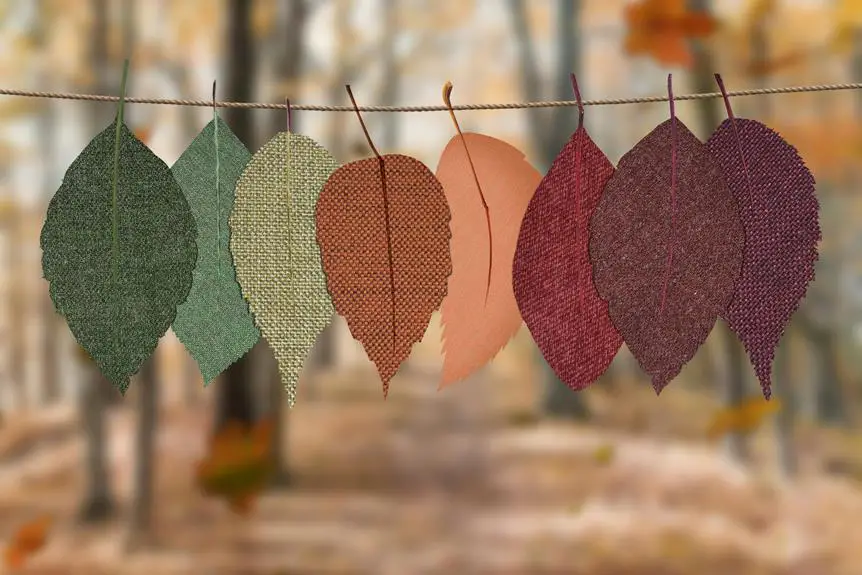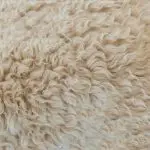When you think about cozy fabrics, fleece and Sherpa likely come to mind, each offering unique benefits. Fleece is lightweight and breathable, making it ideal for those active days outdoors, while Sherpa's plush texture provides an enveloping warmth perfect for lounging at home. However, choosing between the two isn't as straightforward as it seems. What factors should you consider to ensure you make the best choice for your lifestyle? Understanding the nuances of each fabric can greatly influence your comfort and style during colder months.
Table of Contents
Key Takeaways
- Fleece is lightweight and breathable, making it ideal for outdoor activities and moderate temperatures.
- Sherpa offers thicker insulation and a luxurious feel, perfect for cozy lounging in cold weather.
- Fleece is more durable and resistant to wear compared to Sherpa, which may pill over time.
- Both fabrics are machine washable, but air drying is recommended to maintain their integrity.
Overview of Fleece
Fleece is a lightweight, synthetic fabric that offers exceptional warmth and breathability, making it a popular choice for outdoor apparel. When you wear fleece, you'll instantly appreciate its soft texture and cozy feel against your skin. This fabric is primarily made from polyester, which not only enhances its durability but also allows for quick drying, making it ideal for active adventures.
You'll find fleece in various weights and styles, from thin microfleece layers to thicker options designed for colder climates. It provides excellent insulation without the bulk, so you can easily layer it under a jacket or wear it on its own. Its moisture-wicking properties help keep you dry during physical activities, while the breathable nature ensures you won't overheat.
Fleece also comes in a range of colors and patterns, allowing you to express your style while staying comfortable. Plus, it's relatively easy to care for; most fleece items are machine washable and quick to dry.
Whether you're hiking, skiing, or simply lounging at home, fleece is a versatile fabric that can meet your needs and keep you warm.
Overview of Sherpa
When you think about Sherpa, you'll notice its unique fabric composition and soft texture that sets it apart.
This material isn't just about looks; it offers impressive warmth and insulation properties that make it perfect for colder weather.
Let's explore how Sherpa stacks up in these key areas.
Fabric Composition and Texture
Sherpa fabric features a soft, textured surface created from synthetic fibers, mimicking the look and feel of sheepskin. You'll notice that it's typically made from polyester, which contributes to its plush quality and durability. The fabric's unique construction involves a dense pile that gives it a fuzzy appearance, making it an appealing choice for cozy clothing and blankets.
When you touch Sherpa, you'll experience a warm, velvety texture that feels wonderful against your skin. This makes it an excellent option for items like jackets and hoodies, where comfort is key. The fabric's surface can vary, with some Sherpa having a tighter, more compact feel while others boast a looser, fluffier texture.
Another benefit of Sherpa is its lightweight nature, which allows for ease of movement while still providing a luxuriously soft experience. Plus, it's generally easy to care for, making it a practical choice for everyday wear.
Warmth and Insulation Properties
How does Sherpa provide such exceptional warmth and insulation, making it a favored choice for chilly weather?
Sherpa's unique construction plays a crucial role. It features a soft, fluffy pile that mimics the texture of sheepskin, creating air pockets that trap heat close to your body. This design helps maintain your body warmth, even in frigid conditions.
Additionally, Sherpa's thick fibers resist wind and moisture, providing an extra layer of protection against the elements. When you wear Sherpa, you'll appreciate how it not only keeps you warm but also offers comfort, making it perfect for lounging indoors or layering during outdoor activities.
Unlike some materials, Sherpa doesn't lose its insulating properties with regular use. It retains warmth over time, ensuring you stay cozy season after season. Plus, it's lightweight, meaning you won't feel weighed down while enjoying its benefits.
Key Differences in Material
Fleece and Sherpa differ significantly in their material composition, affecting their warmth, texture, and overall durability.
Fleece is typically made from synthetic fibers like polyester, which gives it a soft and lightweight feel. This material is designed to be breathable, moisture-wicking, and quick-drying, making it a popular choice for active wear and outdoor activities.
On the other hand, Sherpa is often a blend of synthetic and natural fibers, such as polyester and acrylic or cotton. This combination creates a plush, textured surface that mimics the feel of sheep's wool. Sherpa's thicker pile provides a cozy, luxurious touch, while also being heavier than fleece. The texture of Sherpa can give it a more traditional, rustic appeal, making it a popular choice for blankets and outerwear.
Durability also varies between the two. Fleece tends to be more resistant to wear and tear, while Sherpa may pill over time due to its softer fibers.
When choosing between the two, consider the intended use and the type of comfort you prefer. Understanding these key material differences can help you make the best choice for your needs.
Warmth and Insulation
When it comes to warmth and insulation, fleece offers a lightweight option that excels in breathability, while Sherpa provides a thicker, cozier feel that traps heat effectively.
If you're looking for something to wear during moderate temperatures or for activities that require movement, fleece is your best bet. It keeps you warm without making you feel weighed down, and its moisture-wicking properties help regulate your body temperature.
On the other hand, if you're planning to stay in colder conditions or simply want to snuggle up at home, Sherpa is the way to go. Its plush texture and density create an excellent barrier against cold air, ensuring you stay toasty even in frigid weather. You'll notice that Sherpa tends to retain heat better due to its thicker construction, making it ideal for lounging on chilly nights.
Ultimately, the choice between fleece and Sherpa comes down to your specific needs. If you need something versatile and lightweight for outdoor activities, fleece will serve you well. Conversely, if maximum warmth and a luxurious feel are your priorities, you'll want to reach for Sherpa.
Care and Maintenance
Caring for your fleece and Sherpa garments ensures they maintain their warmth and softness for years to come. Start by checking the care labels on each item, as specific instructions can vary. Generally, both fabrics are machine washable, but it's best to use a gentle cycle with cold water. Avoid fabric softeners, as they can reduce the insulating properties of fleece and Sherpa.
When it comes to drying, air drying is ideal for preserving the fabric's texture. However, if you're short on time, use a low-heat setting in the dryer. Make sure to remove your items promptly to prevent wrinkles. If you notice any pilling, a fabric shaver can help restore your fleece's smooth surface.
For stains, treat them promptly with a mild detergent before washing. Keep your garments away from direct sunlight for extended periods, as this can cause fading over time.
Lastly, store your fleece and Sherpa items in a cool, dry place, ideally folded rather than hung, to maintain their shape. By following these care tips, you'll ensure your cozy clothing remains a staple in your wardrobe!
Best Uses for Each Fabric
You'll find that fleece is perfect for active outdoor activities, while Sherpa excels in providing cozy warmth for lounging at home.
When you're out hiking, jogging, or skiing, fleece's lightweight and moisture-wicking properties keep you comfortable. Its breathability ensures you won't overheat, making it an excellent choice for all your adventures.
On the other hand, when you want to unwind and relax, Sherpa wraps you in a plush embrace.
Here are the best uses for each fabric:
- Fleece: Ideal for running errands, camping trips, or chilly morning walks. It's your go-to fabric for staying warm without feeling weighed down.
- Sherpa: Perfect for movie nights, snuggling up with a book, or simply lounging around the house. It offers that extra layer of comfort you crave on lazy days.
- Combination: When you want to enjoy both, consider layering fleece under a Sherpa jacket. This combo keeps you warm while allowing for versatility in your outfit.
Frequently Asked Questions
Are Fleece and Sherpa Fabrics Hypoallergenic?
When it comes to hypoallergenic properties, fleece and Sherpa aren't inherently hypoallergenic. However, they're generally safe for most people. If you have sensitivities, always check the specific materials and treatments used in the fabric.
Can Fleece and Sherpa Be Recycled?
Yes, fleece and sherpa can be recycled, but it depends on the specific material blends. Check local recycling guidelines to see if they accept these fabrics, and always look for recycling programs in your area.
How Do Fleece and Sherpa Compare in Sustainability?
When considering sustainability, you'll find fleece often made from recycled plastics, while Sherpa usually isn't. However, both fabrics can have environmental impacts, so it's essential to check their sourcing and production practices before choosing.
What Are Common Blends That Include Fleece or Sherpa?
You'll often find fleece blended with cotton for softness or polyester for durability. Sherpa usually mixes with cotton or synthetic materials, enhancing warmth while maintaining a cozy feel. These blends offer versatility in comfort and style.
Do Fleece and Sherpa Fabrics Pill Over Time?
Yes, fleece and sherpa can pill over time, especially with frequent washing or friction. To minimize pilling, you should wash them gently and avoid using fabric softeners, which can worsen the issue.
- How Does Ring Spun Cotton Affect Garment Fit and Shape Retention? - August 13, 2024
- What Are the Challenges in Producing Ring Spun Cotton? - August 13, 2024
- Is Ring Spun Cotton Suitable for Plus-Size Clothing? - August 13, 2024







